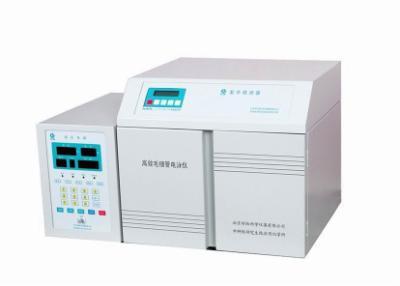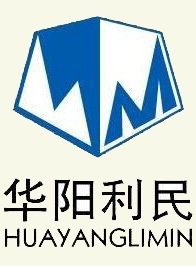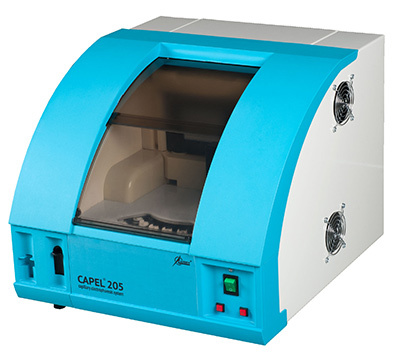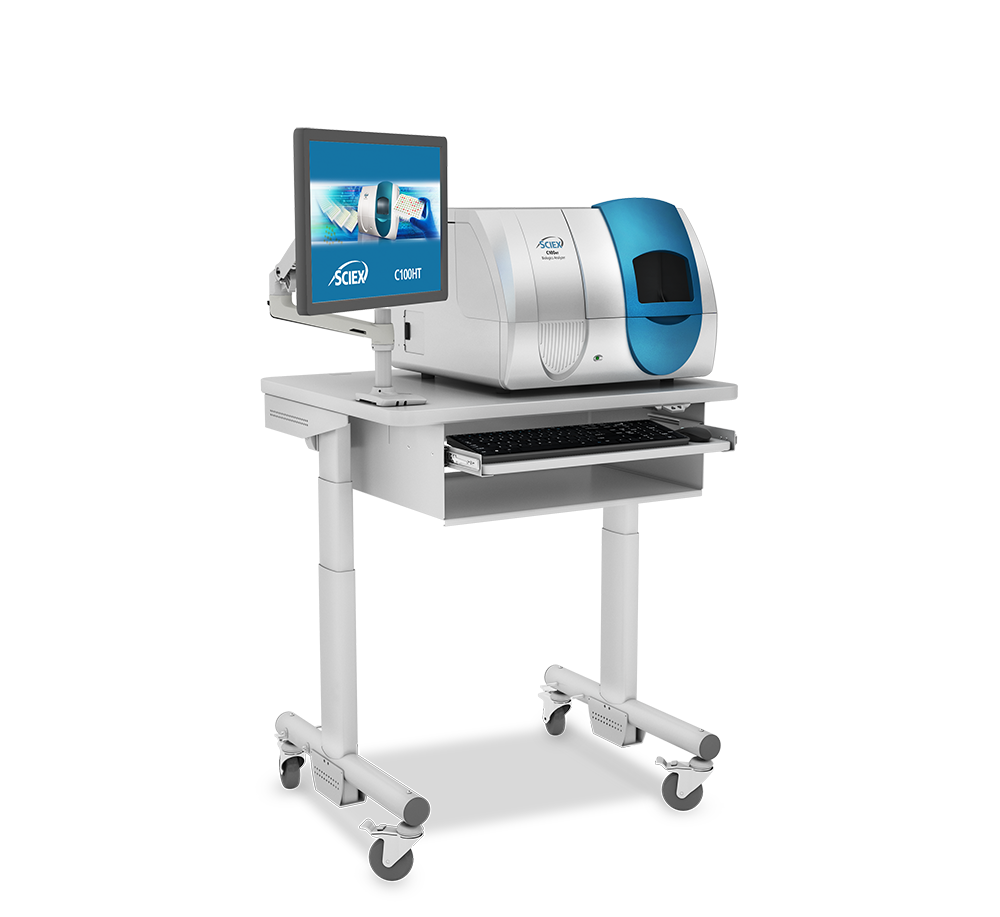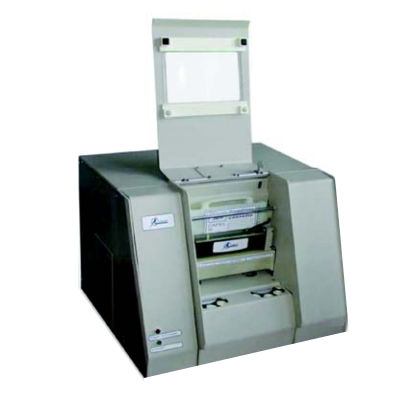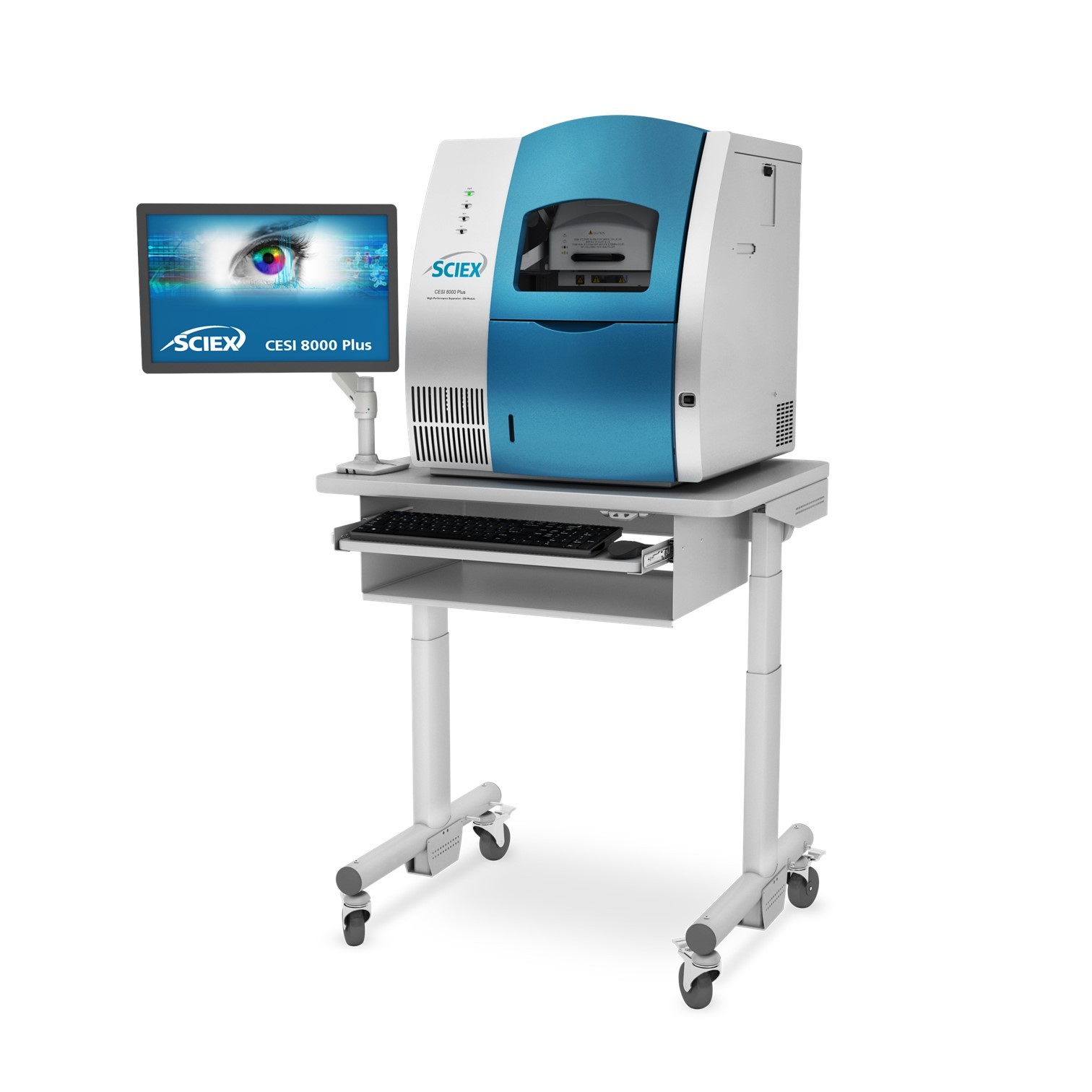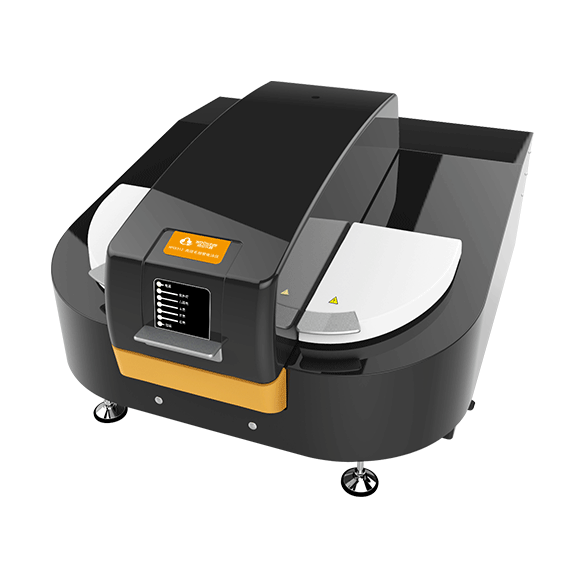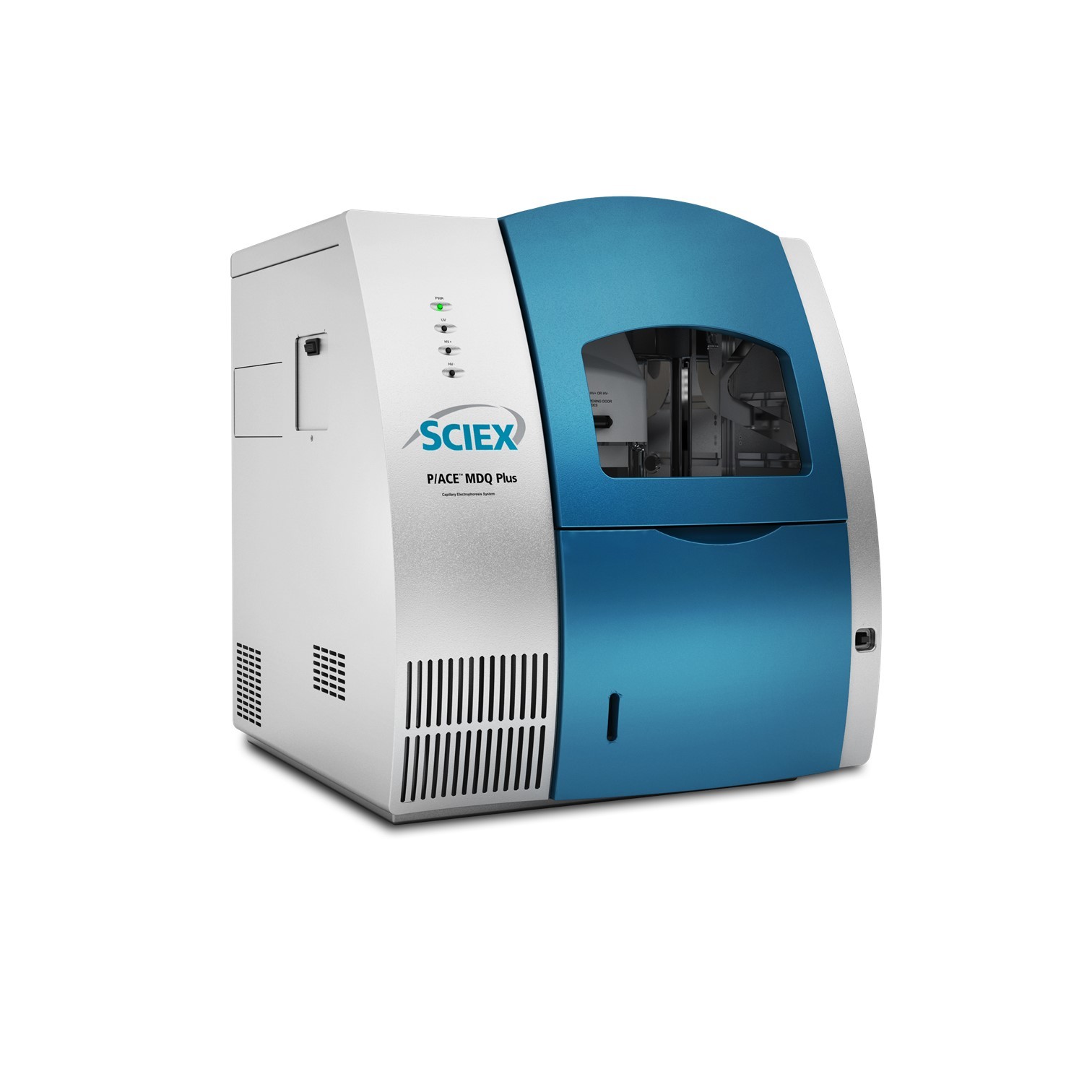方案详情
文
摘 要:以双氯芬酸钠为内标,建立了一种快速、灵敏、准确的分离和测定甘草中甘草次酸和甘草酸的自由溶液毛细管电泳新方法.背景电解质是10 mmol/L硼砂(pH 8.8),分离在5 min内完成.实验证明,所建立的内标法能提高自由溶液毛细管电泳的精密度和定量的准确性.该方法有良好的线性,甘草次酸和甘草酸线性方程的相关系数分别为0.999 6和0.9991.甘草次酸和甘草酸的回收率范围分别为95.6%~100.9%和96.8%~102.9%.该方法被成功地运用于测定甘草根的最佳浸泡和煎煮时间.
关键词:自由溶液毛细管电泳; 甘草次酸; 甘草酸;
方案详情

兰州大学学报(自然科学版)Journal of Lanzhou University (Natural Sciences)第44卷第6期2008年12月Vol.44 No. 6Dec. 2008 Vol. 44Journal of Lanzhou University (Natural Sciences)66 Artical ID:0455-2059(2008)06-0065-07 Separation and determination of glycyrrhetinic acid andglycyrrhizic acid in Glycyrrhiza uralensis Fisch rootby CZE with internal standard method DING Xiu-ping, WANG Min, CHEN Hong-li, ZHANG Hai-ria, CHEN Xing-guo(College of Chemistry and Chemical Engineering, Lanzhou University, Lanzhou 730000, China) Abstract: A fast, sensitive and precise analytical method based on CZE with diclofenac sodium as inter-nal standard (IS) was developed for determining glycyrrhetinic acid (GTA) and giycyrrhizic acid (GA) inGlycyrrhiza uralensis Fisch root. This analysis was carried out with 10 mmol/L borate (adjusted to pH8.8) as a background electrolyte. The separation was achieved in 5 min. The proposed CZE method withIS has also be proven to be s. feasible and atttactive way for improving accuracy of the quantitation. Themethod resulted in excellent linearity, with correlation coefficient of regression equation of 0.9996 and0.9991 for GTA and GA, respectively. Recoveries were in the range of 95.6%~100.9% and 96.8%~102.9%for GTA and GA, respectively. This method has also been successfully applied to determine the optimumtime of the steeping and decocting process of Glycyrrhiza uralensis Fisch root. Key words: capillary zone electrophoresis; glycyrrhetinic acid;glycyrrhizic acid CLC number: O657.8 Document code: A 自由溶液毛细管电泳结合内标法分离测定甘草中的甘草次酸和甘草酸 丁秀萍,汪 敏,陈宏丽,张海霞,陈兴国 (兰州大学化学化工学院,甘肃兰州730000) 摘 要:以双氯芬酸钠为内标,建立了一种快速、灵敏、准确的分离和测定甘草中甘草次酸和甘草酸的自由溶液毛细管电泳新方法.背景电解质是10 mmol/L硼砂(pH 8.8), 分离在5 min内完成.实验证明,所建立的内标法能提高自由溶液毛细管电泳的精密度和定量的准确性,该方法有良好的线性,甘草次酸和甘草酸线性方程的相关系数分别为0.9996和0.9991.甘草次酸和甘草酸的回收率范围分别为 95.6%~100.9%和96.8%~102.9%.该方法被成功地运用于测定甘草根的最佳浸泡和煎煮时间. 关键词:自由溶液毛细管电泳;甘草次酸;甘草酸 中图分类号:0657.8 文献标识码:A Natural medicinal resources provide valuablematerial for the discovery and development of newdrugs of natural origin. Sample preparation is the crucial first step in the analysis of herbal medicine,because it is necessary to extract the desired chemicalcomponents from the herbal material 1l. Among the ( Received date:2008-02-28. ) Found term: Supported by the National Natural Science Foundation of China(20775029) and Interdisciplinary InnovationResearch Fund of Young Scholars, Lanzhou University(824611). Biography: DING Xiu-ping(1982-), female, born in Huangzhong,Qinghai Province, master, majoring in separation science,e-mail: dingxp05@lzu.cn. ( CHEN Hong-li(1976-), fe m ale, born in Yingxian, Shanxi Pro v ince, associate pr o fessor, doctor, m a joring in ) ( separation science, c orresponding author, e-mail: hlchen@lzu.edu.cn. ) different extraction techniques of herbal medicines,the decoction methodl2l is an effective and universalextraction method owing to its simplicity, no needof organic solvent and low-cost equipment, so manymedicinal preparations of herbs and plants are madefrom the extraction of decoction. Before decocting the herbal medicines, it is im-portant to steep them in cold water. It is useful notonly for dissolving the effective components, but alsofor decreasing the decocting time. Because most ofherbal medicines are hard and dry, the sudden heatby the violent fire will make most proteins concreteat the surface of herbal medicines, the water is difficult to infiltrate into the inner layer of then. Thus,the therapeutic effect of the herbal medicines willbe affected3. Up to now. few methods have beenfabricated to determine the appropriate time of thesteeping and decocting process of herbal medicines,which will provide the scientific foundation for thetherapeutic effect of them. Glycyrrhiza uralensis Fisch root has been usedas an herbal medicine in China for over 2000 years.It is frequently used to treat diseases such as ph-thisis, contagious hepatitis, bronchitic asthma andaguel4. Glycyrrhetinic acid (GTA) and glycyrrhizicacid (GA) are the important bioactive componentsof Glycyrrhiza uralensis Fisch root. Several methodssuch as high-performance liquid chromatography(HPLC)5, thin-layer chromatography (TLC)[6 andcapillary electrophoresis (CE)17-9 have been re-ported for the determination of GTA and GA. How.ever, in herbal medicine analysis, TLC lacks quanti-tative precision, while HPLC presents low efficiencyand time-consuming because the column is easy con-taminated. CE has become a powerful technique in separation and detection because of its high resolution at-tainable, minimal sample volume requirement, shortanalysis time, and high separation efficiencyl9-11]However, in this study, because the automatizationof the used CE instrument is low, sample is injectedhydrodynamically into the separation capillary in amanual manner. The volume of solutes injected intothe capillary depend mostly on the time which is con-trolled by individual; So, a sampling bias exists with hydrodynamical injection, and the peak areas plot-ted versus analyte concentrations often show poorlinearity, making the quantitative determination im-precise. Therefore, the quantitation by help of anIS and the measurement of the peak ratio betweenanalyte and IS are always recommended. This paper presented a sensitive and repro-ducible method for the simultaneous determinationof GTA and GA in Glycyrrhiza uralensis Fisch rootusing CZE system. Glycyrrhiza uralensis Fisch rootwas used as a model plent to develop an analyticalsystem suited for the study of the optimum time ofthe steeping and decocting process of herbal medicine,whicn was helpful to find the most efficient samplepreparation method for them.l.Because diclofenacsodium has similar behavior as GTA and GA inthe electric field and its occurrence in the herbalmedicines is not likely, it was used as an IS in thispaper. And the performances of normal way (with-out IS way) and internal standard (IS) method inthe analysis of GTA and GA were compared. Experimental 1.1Chemicals and materials GTA and GA were obtained from the DELTAInformation Centre for Natural Organic Compounds(Anhui, China), and were used as received. Diclofenacsodium(as IS, structure seen in Fig. 1) was purchasedfrom the National Institute for the Control of Phar-maceutical and Biological Products (Beijing, China).The crude drug of Glycyrrhiza uralensis Fisch rootwas purchased from local drug stores. Fig.1 Structure of the analytes Ethanol was purchased from Tianjin Secondary Chemical Factory (Tianjin, China). Borate was pur-chased from Sinopharm Chemical Reagent Co. Ltd(Shanghai, China). All chemicals were of analyticalreagent grade and were used as received. All solutionand buffer were made with distilled water. 1.2 Apparatus A high-performance CE apparatus(CL1030, Bei-jing Cailu Instrumental Company, Beijing, China)was used for all electrophoretic separations. It wasequipped with a power supply (up to constant volt-age 30 kV), a HW-2000 chromatography worksta-tion (Shanghai Qianpu Software Company, Shang-hai, China) for integration and data treatment, and aUV-visible detector (double light beams,A=190~720nm, set at 254 nm). CZE was performed using a 50.0cm(41.0 cm to the detector) fused-silica capiliariesof 75 um i.d. and 375 pin cd. (Yongnian OpticalFiber Factory, Baoding, Hebei, China). Samples wereintroduced from the anodic end of the capillary byhydrodynamic injection, where the sample vial wasraised by 15.5 cm for 5 s. 1.3 Procedures 1.3.1 Solutions preparation Stock standard solutions (1 mg/mL) of GTA,GA and diclofenac sodium were prepared in 50%aqueous ethanol. The standard solutions at variousconcentrations were prepared by appropriate dilutionof the stock solution with 50% aqueous ethanol. Theelectrophoretic running buffer was 10 mmol/L borate(pH 8.8), which was prepared daily from 0.1 mol/Lborate and then adjusted to the desired pH usingeither 1 mol/L NaOH or 1 mol/L HCl. The final pHof the buffer was checked using a PHS-3B pH meter(Shanghai Precision & Scientific Instrument Co.,Shanghai, China). All solutions were filtered through0.45 pm syringe filters before use. 1.3.2 Sample preparation A 2.5 g of Glycyrrhiza uralensis Fisch root wascomminuted into power and then refluxed with 50mL of water for 1 h. The extract was injected di-rectly to the CE system after filtering and dilutingby 100-fold with distilled water for validating the ac-curacy of the proposed method. Before decocting, 2.5 g Glycyrrhiza uralensisFisch root was steeped in 50 mL distilled water for 50 min. In order to observe conveniently the volumechange of aqueous solution, a beaker was used in-stead of a marmite used commonly for decoction.The steeping solution was injected to the CE systemafter diluting 10-fold with distilled water and filter-ing every 10 min. Because the volume (100 pL) ofsupernatant solution which was taken out from thesteeping system was very little, its effect to the totalvolume of the steeping solution can be neglected. Subsequently, the beaker was heated by an elec-tric fire. To be sure that the solution volume wasconstant, distilled wetet was added to the decoctionsystem by a dropping funel (2mL/min). The su-pernatant solution (10 uL) was diluted by 100-foldwith distilled water, filtered and injected to the CEsystem every 10 min. 1.3.3 CZE procedure Prior to the first use, the new capillary was con-ditioned with distilled water for 10 min, 0.1 mol/LNaOH for 10 min and distilled water for 10 min,fol-lowed by the running buffer for 10 min. At the begin-ning of each working day, the capillary was flushedsequentially with distilled water for 5 min, 0.1 mol/LNaOH for 5 min and distilled water for 5 min, fol-lowed by the running buffer for 5 min. Moreover,between runs, the capillary was washed with distilledwater (2 min), 0.1 mol/L NaOH (3 min), distilledwater (2 min) and equilibrated with the fresh run-ning buffer (3 min) to ensure the good reproducibil-ity. 2 Results and discussion 2.1 Optimization of the separationconditions In order to monitor the change of GTA and GAin the steeping and decocting process of Glycyrrhizauralensis Fisch root, it was very necessary to de-velop a quick and accurate method with a low limitof detection (LOD) and satisfactory separation. Theoptimization of separation conditions was of primaryimportance. In this work, separations of GTA, GAand IS in standard solution were optimized by study-ing the effects of the buffer pH, the concentration ofborate and applied voltage. The peak sequence ofthe three compounds was GTA, IS and GA, and was invariable when the conditions were changed. Theidentity of the recorded peaks was confirmed by in-dependent injection of the pure compounds. .1.1 Optimization of the pH of the running buffer In CZE, the pH value of the running buffer is akey strategy in optimizing the separation conditions.It influences electroosmotic flow (EOF), proton dis-sociation of analytes, resolution and sensitivity. Inthis study, the effect of buffer pH on the separation inthe pH range of 8.3~10.3 with 10 mmol/L borate so-lution and 20.0 kV applied voltage was investigated(Fig.2). 10 mmol/L borate buffer; 20.0 kV voltage;fused-silica separation capillary, 75 um i.d.x375um o.d.x 50 cm length (41 cm effective length);detection wavelength: 254 nm; room tempera-ture Fig. 2 Effect of pH on migration times of GTA, ISand GA From Fig.2, the migration times of GTA, ISand GA were firstly increasing followed by decreasingwith the pH increasing. Although short migrationtime was achieved when pH was lower than 8.3, thesensitivity was poor. At pH 9.8, the IS could not becompletely separated with unknown interfering peakin sample. Simultaneously, with the pH changed, theelectric current increased. Considerable Joule heat-ing from the large current would be also produced.A good separation condition should satisfy the needthat the sensitivity was high within a relatively shortanalysis time and the peaks were symmetrical andsynchronously avoiding the generation of excessiveJoule heating, so pH 8.8 was chosen finally. 2.1.2 Optimization of the borate concentration Buffer concentration has obvious influence onthe separation because it could influence the EOFand the viscosity of the electrolyte. In order toachieve the optimum sensitivity of the test mix-tures, the effect of borate concentration at pH 8.8 on these separations was studied in the range of 5~25mmol/L, and 20.0 kV applied voltage (Fig.3). buffer pH 8.8: the other experimental conditionswere as in Fig. 2 Fig. 3 Effect of borate concentration on migrationtimes of GTA, IS and GA From Fig.3, with the increase of borate concen-tration, the migration times of GTA, IS and GA weregradually increasing, and then decreasing. Whenthe buffer concentration was 5 mmol/L, the peakwas wider than other conditions and the peak wasdissymmetrical. Short migration times of GTA, ISand GA were obtained when the buffer concentra-tion were higher than 20 mmol/L, but the electriccurrent which had a trend of increasing with the in-crease of borate concentration led to the poor sen-sitivity. So, 10 mmol/L was considered as optimumconcentration of borate for further experiment. 2.1.3 Effect of separation voltage Attempts were made to optimize the separationcondition by using different applied voltages rangingfrom 14 kV to 22 kV. As may be expected, increas-ing the voltage gave shorter migration times, but thisalso caused the increase of electric current. It wasprobably owing to an increase of EOF. The lowervoltage would result in longer broadening peaks dueto diffusion effects. In this study, when separationvoltage was higher than 20 kV, the migration timesof the analytes were evidently shortened, however,diclofenac sodium could not be completely separatedwith unknown interfering peak in sample. With con-sidering migration time and electric current, the sep-aration voltage finally chosen was 20 kV. The optimum experimental conditions were: 10mmol/L borate buffer (pH 8.8), 20.0 kV voltage; 254nm UV detection. 2.2 Performance of the proposed CZEmethod Calibration graphs were obtained by injectingstandard solutions at seven different concentrations.Each point on the calibration graph corresponded to the mean ratio of GTA or GA to IS obtained fromthree independent peak area measurements.Thecorresponding regression equations, as well as othercharacteristic parameters for the determination ofGTA and GA were listed in Tab.1. Tab. 1 Performance of the proposed CZE method in the analysis of GTA and GA Ingredient Method RSD/% Regression equation Correlation LODb/ Linear range/ . Peak area Peak height 0. b coefficient (pg/mL) (pg/mL) GTA GA Normal way 3.8 4.7 -1424.3 234.3 0.995 1 IS method 1.8 2.2 -0.059 36 0.01928 0.9996 1.354 1.95~500 Normal way 3.4 4.5 -2084 171.9 0.9947 IS method 0.9 1.7 -0.01208 0.01404 0.9991 1.836 1.95~500 a y=a+br; normal way: y, peak area; IS method: y, the ratio of peak area for GTA or GA to IS; s, standardconcentration(ug/mL); b S/N=3. The ratios of peak areas of GTA or GA to ISwere employed for quantification. The repeatabilityof CZE was evaluated under cptimized conditionsusing a standard solution containing 125 pg/mLGTA, 125 pg/mL GA and 60 pg/ mL IS. The typicalelectropherogram of the standard mixture solutionwas shown in Fig.4a a Standard mixture solution of 125 pg/mL GTA,125 pg/mL GA and 60 pg/mL IS bGlycyrrhiza uralensis Fisch root and 60ug/mL IS Separation condition: 10 mmol/L borate, pH8.8, 20.0 kV; the other experimental conditionswere as in Fig. 2 Fig. 4 typical electrochromatograms The repeatability was expressed as the RSDvalues of the migration times and peak areas ob-tained from five injections (given in Tab.1). (without IS) and IS method in the analysis of GTAand GA was also compared in Tab. 1. The result in-dicated that the proposed CZE with IS method wasproven to be a feasible and attractive way for im-proving accuracy of the quantitation. 2.3 Application 2.3.1 The analysis of the extraction of Glycyrrhizauralensis Fisch root In order to verify the accuracy of the establishedmethod, it was firstly applied to the determinationof the extraction of Glycyrrhiza uralensis Fisch root.Quantitative analysis was performed under the opti-mum conditions obtained from the experiments de-scribed above. The typical electropherograms of Gly-cyrrhiza uralensis Fisch root were shown in Fig. 4b The peaks were identified by the standard ad-dition methods. Accuracy of the methods and thepotential matrix effects were established by analyz-ing samples. The recovery test was carried as follows:three different quantities (low, medium and high) ofstandard solutions were added into sample solutions.The quantity of each analyte was subsequently ob-tained from the corresponding calibration curve. Therecoveries of the two analytes ranged from 95.6% to102.9% (see Tab.2,n=3). From the results of precision test and recoverytest, it was known that the method manifested goodprecision and accuracy. 2.3.2 The optimization of the steeping time ofGlycyrrhiza uralensis Fisch root The proposed method has been applied to mon-itor the concentration changes of active components in the steeping process of Glycyrrhiza uralensis Fischroot. The concentrations of GTA and GA at differ-ent time in the steeping progress were calculated bythe calibration curve and given in Fig.5. Tab. 2 Results for the determination of GTAand GA in the extracts of Glycyrrhizauralensis Fisch root Ingredient Content/ ( Concentration/(pg/mL) Recovery/ (mg/g) Spiked Found % 10.0 29.1 95.6 GTA 20.4 20.0 39.6 98.0 30.0 50.9 100.9 GA 52.2 25.0 74.7 96.8 50.0 101.6 99.5 70.0 125.7 102.9 Separation condition were as in Fig. 4 Fig. 5Concentration changes of GTA and GA at dif-ferent time in the steeping progress of Gly-cyrrhiza uralensis Fisch root From Fig. 5, the concentration of GTA and GAchanged gradually with steeping time. After 50 min,the concentrations had no evident change. So, 50min was as the suitable steeping time. 2.3.3 The optimization of the decocting time ofGlycyrrhiza uralensis Fisch root The proposed method has also been appliedto monitor the concentration changes of GTA andGA in the decocting process of Glycurrhiza uralensisFisch root. The extraction solution at different timewas injected directly to the CE system after dilutingand filtering. The concentrations of GTA and GAat different time in the decocting progress were thencalculated by the calibration curve. The results weregiven in Fig. 6. From Fig.6, the concentration of GTA and GAchanged gradually with decocting time. At 50 min,the concentrations reached steady, and the longer de- cocting time was vain. This result was very impor-tant for the extraction of Glycyrrhiza uralensis Fischroot, and was a reference to decocting other herbalmedicines. Separation condition were as in Fig. 4 Fig. 6Concentration changes of GTA and GA at dif-ferent time in the decocting progress of Gly-cyrrhiza uralensis Fisch root 3 Concluding remarks In this study, a sensitive and accuracy CZE withIS method has been successfully used to monitor theconcentration changes of GTA and GA in the steep-ing and decocting process of Glycyrrhiza uralensisFisch root. The optimum times of steeping and de-cocting were found. Excellent separation efficiencyand good repeatability were achieved using borateelectrophoretic buffer. In addition, the performancesof normal way (without IS) and IS method were com-pared, and the result indicated that the proposedCZE with IS method can obviously improve the re-producibility. The technique should be very usefulto determine the optimum time of steeping and de-cocting process of any other herbal medicine. ( References ) ( [1] DENG Chun-hui, LIu Ning, CAo Ming-xia, et al. Re- cent developments in sample preparation techniquesfor chromatography analysis o f traditional Chinese medicines[J]. J Chromatogr A, 2007, 1 153:9 0 -96. ) ( 2 E d itorial Board of P harmacopoeia of People’s Re- public of China. Pharmacopoeia of People’s Repub-lic of China[M]. Beijing: Chemical Industry P u b-lishing, 2000. ) ( [3] SHAN Jian-xue. The relationship between variety of TCM decoct and cl i nic efficacy[J]. Hunan GuidingJournal of TCMP, 2002,8(11):692-693. ) ( 4WA N G Qiao-e, MA S hao - mei, Fu Bo-q i ang, et al. Development of m u lti-stage countercurrent e x trac-tion technology f or the e xtraction o f g lycyrrhizic acid (GA) f r om li c orice (Glycyrrhiza u ralensisFisch) J. Biochem Eng J, 2004, 2 1 : 2 8 5-292. ) ( 5] F u Bo-qiang, Li u Jie, Li Hu a n, et a l. The appli- cation of macroporous resins i n the separation of licorice flavonoids and glycyrrhizic a cid[J]. J Chro-matogr A, 2005, 1089: 18-24. ) ( 6] X u Yu, FANG Lu-yan, PENG Meng-ru. The simulta- neous TLC identification of three crude d rugs a nd content determination of glycyrrhizic acid of Guipitablet [J]. Ch i n JMAP, 2003 , 20(5):376-378. ) ( [7] CHEN Hong-ren, SHEU Shuenn-jyi. Determination cfglycyrrhizin and g lycyrrhetinic acid in traditional Chinese m edicinal p r eparations b y capillary e l ec- trophoresis[J]. J Chromatogr A, 1993, 653: 18 4 -188. ) ( 8] H UANG H s i-ya, HSIEH You-zung. D etermination of puerarin, d aidzein, p aeoniflorin, cinnamic acid, gly- ) ( cyrrhizin, ephedrine, a n d [6 ] -gingerol i n Ge-gen- tang by micellar electrokinetic chromatography[J].Anal C him Acta, 1997, 351:4 9 -55. ) ( 9] L i Guan-bin, ZHANG Hong-yi, FAN Yu-quan, e t al. Migration b ehavior a nd separation o f a ctive com-ponents in Glycyrrhiza uralensis Fisch and its com-mercial e xtract b y micellar electrokinetic capillarychromatographyJ. J C h romatogr A, 1999, 86 3 :105-114. ) ( 10 D o NG Yu - ming, CHEN Xiao-feng, CHEN Xing-guo,et al. Rapid determination of berberine in Tianshen capsule by ncnuqueous cap i llary ele c trophoresis[J]. Journal of Lanzhcu University: Natural Sciences, 2006,42(6): 73-77. ) ( [iT] Lu Wen-iuan, CHEN Yong-lei, ZHANG Yu - xia, et a l . Microemulsion electrokinetic chromatography forthe separation o f a rctiin and a rctigenin i n F ructusarctir and its herbal preparations[J]. J Chromatogr B,2007,860:127-133. )
确定







还剩5页未读,是否继续阅读?
北京华阳利民仪器有限公司为您提供《甘草中甘草次酸和甘草酸检测方案(毛细管电泳仪)》,该方案主要用于中药材和饮片中含量测定检测,参考标准--,《甘草中甘草次酸和甘草酸检测方案(毛细管电泳仪)》用到的仪器有高效毛细管电泳仪(紫外检测)CL1030
推荐专场
相关方案
更多
该厂商其他方案
更多

